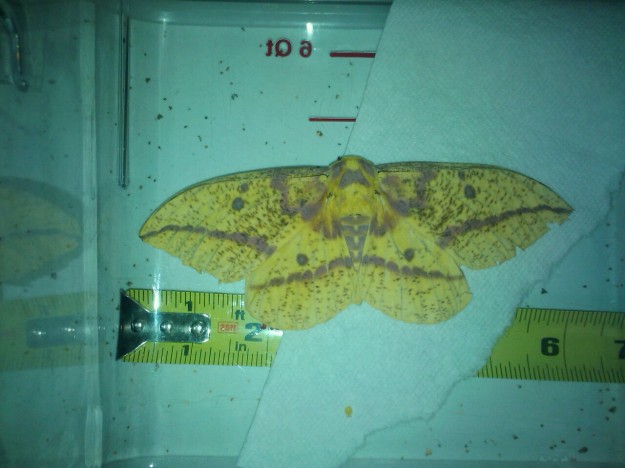On going inside to examine the moth, I found a large female Eacles
Imperialis, with not a scale of down misplaced. Even by gas light
I could see that the yellow of the living moth was a warm canary
colour, and the lavender of the mounted specimen closer heliotrope
on the living, for there were pinkish tints that had faded from the
pinned moth.She was heavy with eggs, and made no attempt to fly, so I closed
the box and left her until the lights were out, and then removed the
lid. Every opening was tightly screened, and as she had mated, I did
not think she would fly.
– excerpt from Moths of the Limberlost by Gene Stratton-Porter
All the way from the road, as my sister-in-law Liz and I pulled up to my house after a girls’-night-out, we could see this yellow winged creature clinging to my front screened door. This moth, a female, is so enormous, it looks like a bat who narrowly escaped after nearly drowning in a pail of yellow paint.
When I was a little girl, my parents took our family on a homeschool field trip to the homestead of naturalist and pioneer female photographer Gene Stratton-Porter. We walked through the lush green Limberlost trails and climbed the very steep stairs of her Indiana cabin.
The memory of my childhood trip was vividly recalled during the search to identify my incredible catch, when I stumbled upon an e-copy of Moths of the Limberlost, of which Porter devoted an entire chapter to this particular species.
Isn’t it amazing how her description still perfectly details the “Yellow Emperor”, as she fondly called it, almost 100 years later?

